Cathedral of Ekatontapiliani Opposite of the port of Parikia, the Cathedral of Ekatontapiliani, which dates from AD 326, is one of the finest churches in the Cyclades. The building is three distinct churches: Agios Nikolaos, the largest, with superb columns of Parian marble and a carved iconostasis in the east of the compound, the ornate Church of Our Lady and the ancient Baptistery. The name translates as Our Lady of the Hundred Gates, though this is a wishful rounding-up of a still-impressive number of doorways. The Byzantine Museum, within the compound, has a collection of icons and other artefacts.

Archaeological Museum Just behind the Cathedral of Ekatontapiliani, this museum is a cool escape into the island's past. It has some marvelous pieces, including a 5th-century Nike on the point of alighting and a 6th-century Gorgon also barely in touch with the surly earth. Earlier examples of splendid pottery include the Fat Lady of Saliagos, while a major exhibit is a fragment slab of the 4th-century Parian Chronicle, which lists the most outstanding artistic achievements of ancient Greece.
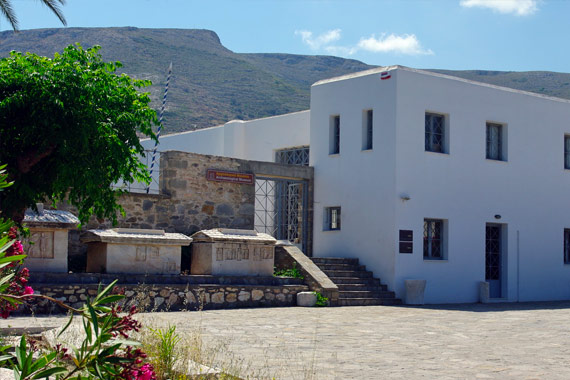
Frankish Castle Check out the outer walls of this fortress, built by the Venetian Duke Marco Sanudo of Naxos in AD 1260. Built with the stones from ancient buildings that once stood on this site, you can find remnants from the arc temple of Athena and an Ionic temple from the 5th century BC. It is just a few steps from the old town of Parikia.
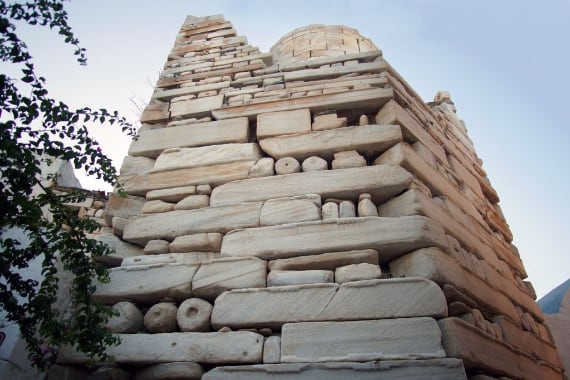
Ancient marble quarries Marathi At Marathi village, 5 km from Parikia, there are the ancient marble quarries, dating back to the 3rd millennia BC. From this marble quarries, ancient sculpted masterpieces were created, such as the statues of the Aphrodite of Milo, the Maidens of the Acropolis, the Niki of Delos and the Hermes of Praxiteles, as well as the Sifnian Treasure and the Temple of Apollo in Delphi, the Temple of Zeus in Olympia and Temple of Apollo in Delos. In the quarry, visitors can see the corridors, the stoas and various inscriptions.
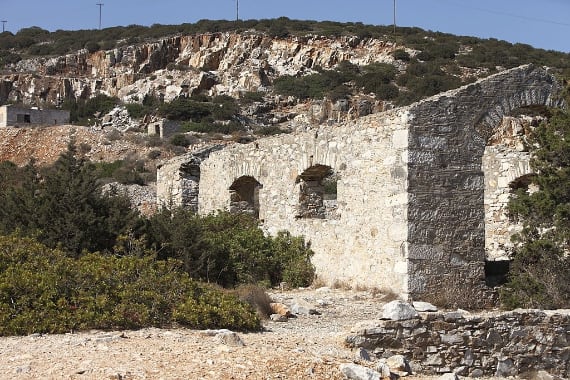
Ancient Cemetery of Parikia During recent excavations (1983) a significant gravesite was discovered that was in use from the late 8th through the third centuries B.C.. The cemetery was discovered near the port right next to the waterfront road. It holds a variety of grave types dating to different periods. The most significant find was a Polyandrio (group grave), unique throughout the Aegean and dating back to the late Geometric Period (8th Century B.C.). Today the site is maintained as an archeological park with an accompanying display of interesting relics as well as photographs of the early as well as the most recent excavations.
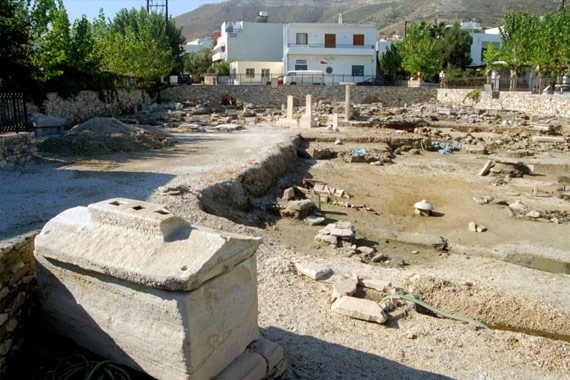
The Sanctuaries of Asclepius and Pythian Apollo Just south of Parikia, the foundations of the sanctuaries of Pythian Apollo and Asclepius, the healing god, sit upon a hillside. Unfortunately, much of the Pythia’s foundations has been destroyed and only remnants of the temple can be seen on the upper hillside. Along with these remnants lie patches of water from a spring. The temples were built near water because of the necessities of water in religious ceremonies, especially for the healing god. On the lower hillside is the foundation for the Asklepios temple.
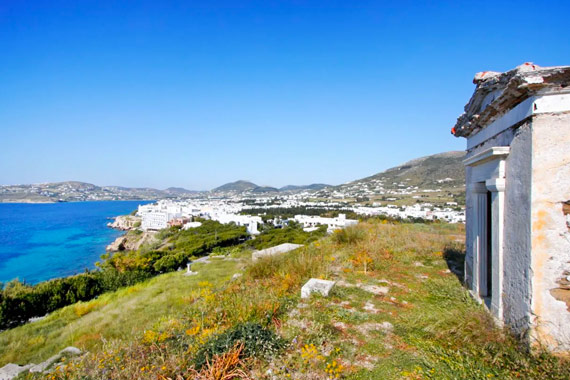
Butterfly valley 7 km west from Parikia, near the Monastery of Christos Dasos (or Agios Arsenios), there is an idyllic landscape of dense vegetation and abundant running water, a unique monument of Natural beauty. The area is a small park with paths and steps, The park is open from June to September from 9am to 8pm.
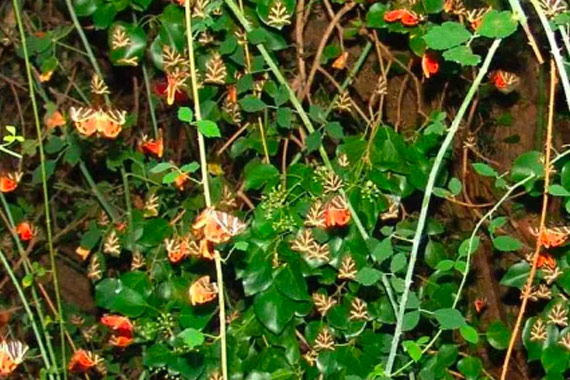
Cave of Antiparos The cave is very extensive, and on several levels. The lyric poet Archilochus of Paros is said to have left an inscription in the cave. In 1673 the French archaeologist Marquis de Nointal, French ambassador in Istanbul lived in the cave for three days with numerous companions and celebrated mass on Christmas Day in the cave. Later visitors who carved their names included Byron and the first king of Greece, Otto. The cave is fully exploited in the second half of the 2000s with funds from the EU by erecting barriers, building adequate steps, installing lighting, security cameras and loudspeakers to inform visitors.
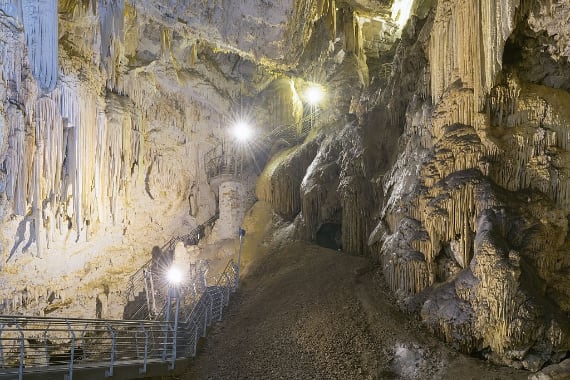
Moraitis Winery Pressing grapes since 1910, the Moraitis family has got it down to a fine art. Tour the original stone cellars and consider early contraptions and equipment before sitting down for a taste. The white Meltemi is particularly good. The winery is an easy walk outside of Naousa village.
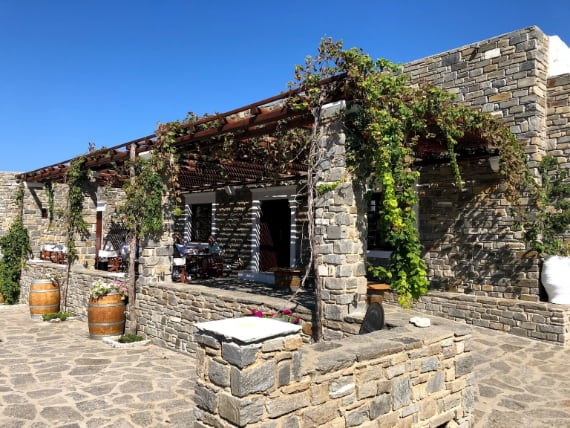
Venetian Fortress of Naoussa It is located in the old port of Naoussa and it was constructed in the 15th century by the Venetians. The fortress was used as a watchtower for pirate and enemy attacks and as a front line in times of war. Today only part of this fort survives a half-submerged watchtower that is connected to the mainland with a short path.
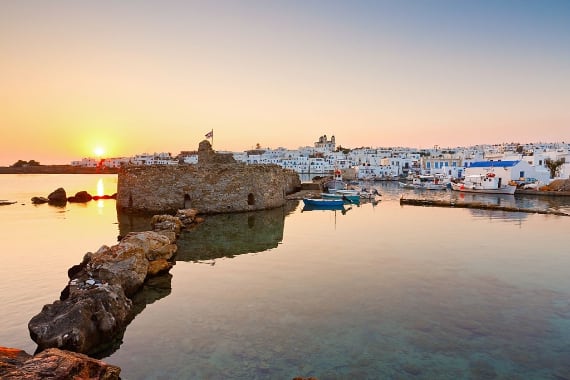
Dining in Naoussa Naoussa is a must-visit place of Paros. It is well-known for its nightlife and its fancy restaurants and gets crowded especially at dinner time. A true Cycladic gem, Naoussa has gracefully retained its traditional architecture and authentic charm although has experienced substantial tourist growth. Built amphitheatrical around its cozy port, Naoussa offers a variety of excellent shops, seafood taverns, bars and ouzeries to indulge into.
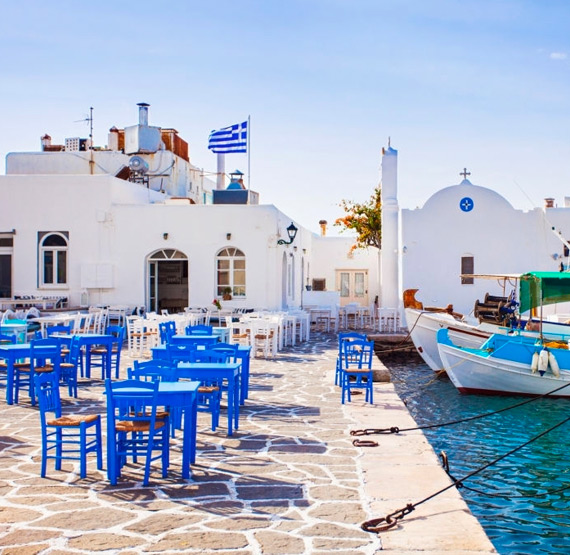
Visit the traditional Lefkes village Lefkes is probably the most authentic village in Paros. It was the former Parian capital during the Middle Ages, situated 11 km from Parikia. It hosts approximately 500 inhabitants and as it is located at a 300-meter altitude it enjoys splendid views of Parian landscapes and the Aegean Sea in the horizon. The village abides by the cubic, whitewashed Cycladic architecture, while multiple Venetian buildings, churches and landmarks enhance its cultural heritage. Explore its traditional narrow streets and interact with the friendly locals, while drinking a greek coffee or an ouzo at the kafeneio in the picturesque central square.
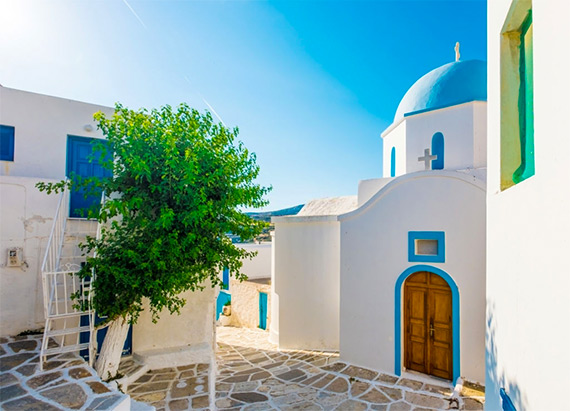
Watch a movie under the stars It has become a Greek summer tradition to watch a movie under the stars. Paros has two open-air cinemas: "Cine Rex" which is located in Parikia and "Cine Enastron" which is part of the Environmental and Cultural Park in Monastiri beach near Naoussa. "Cine Rex" has two performances per day. The first one begins around 21:00 and the second one begins around 23:00. At this cinema you will have the chance to watch the latest releases in their original version with greek subtitles. "Cine Enastron" on the other hand, plays mostly classic movies and admission is free.
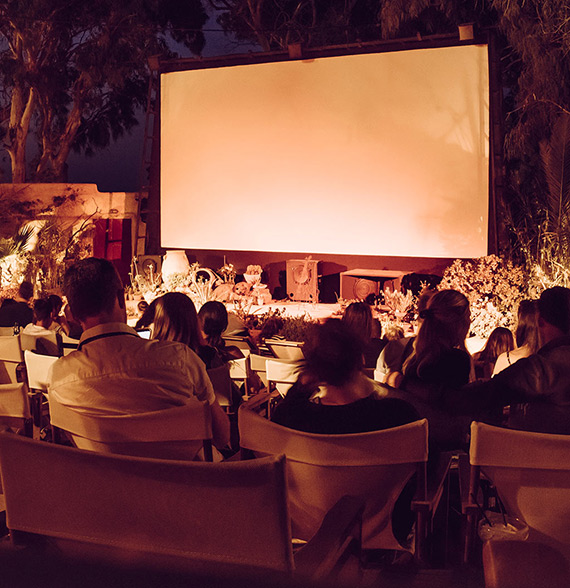
Shopping in the villages of Paros Before leaving the island, dedicate some time to explore its wonderful shopping scene. You will be surprised by the discoveries you will make! While strolling around those whitewashed labyrinth narrow streets of Parikia and Naoussa, you will explore some lovely shops selling designer souvenirs, beautiful ceramics, traditional Parian products, Grecian style accessories, leather sandals and much more.
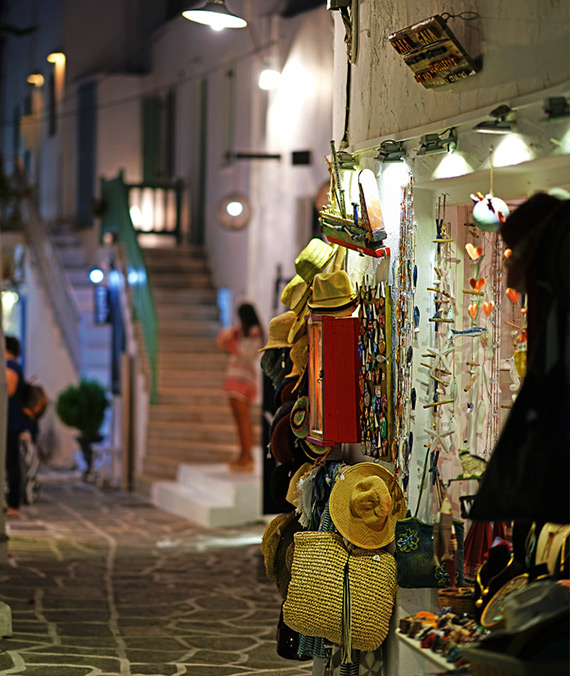
Snorkeling boat excursion Explore this beautiful part of Greece on a traditional Caique. Stopping along the way for some of the best swimming and snorkeling the region has to offer! Spend a day sailing from Paros to the beautiful surrounding Cyclades Islands. Explore secret beaches, learn how to sail, make new friends and taste local delicacies with Greek wine.This is a great opportunity to discover Paros and its unique aquatic life. You will have the opportunity to swim in the best sites of the area enjoying the Aegean Sea while snorkeling to observe the underwater sea life.
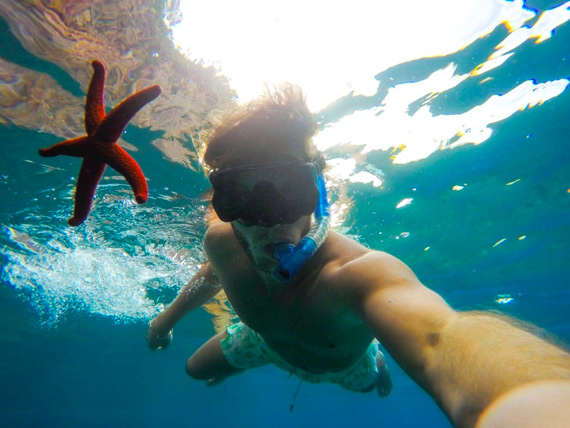
Paros is situated in the center of the Cyclades islands and is the 3rd biggest island after Naxos and Andros. It lies approximately 100 miles (161 kilometers) from Piraeus, the main port of Athens. The trip from the port of Piraeus or Rafina it is 5 hours with regular boats or 3 hours with speedboats. With airplane the journey from Athens is 35 minutes. It has also frequent ferry connections with most of the neighbour islands such as Naxos, Ios, Santorini, and Mykonos . It has about 12.000 inhabitants, its extension is 186,5 square kilometres and the length of its shores is 120 kilometers. The highest peak is the mountain of Agioi Pantes (Saint Pantes) with 770 meters height. The capital town of the island is Parikia, with the famous, 17 centuries old, church of Ekatontapiliani (the church with the hundred doors), the Frankish Castle and the archeological Museum.
There are some Monasteries and many small churches. The roads and streets of Paros are well preserved and you can drive around the island in less than 1 hour and 30 minutes. The biggest villages of Paros are the following: Parikia, Naoussa, Lefkes, Marpissa, Piso Livadi, Drios, Aliki, Punda, Marathi and Kostos. At the small village of Marathi there are the ancient quarries of the famous for its whiteness, Parian marbles. The recent years the island has become one of the most cosmopolitan islands of Greece. Here people can find good nightlife, taverns, ouzeri and enjoy with many kinds of water sports such as: Windsurfing, Jet ski, Sailing, Scuba diving and other more. Paros is very well known for its many, sandy beaches with its clear water. The most well-known are: Marchelo, Kolimpithres, Santa Maria, Livadia, Parasporos, Golden Beach , Punda and Logaras. Near the monastery of Saint Arsenios there is a beautiful field with plants and trees that is called: Petaloudes (butterflies Valley), which every summer is full of many kind and colors butterflies.
In the island of Antiparos, that is only 7 minutes away by boat from Paros, there is the famous Cave of Antiparos.
